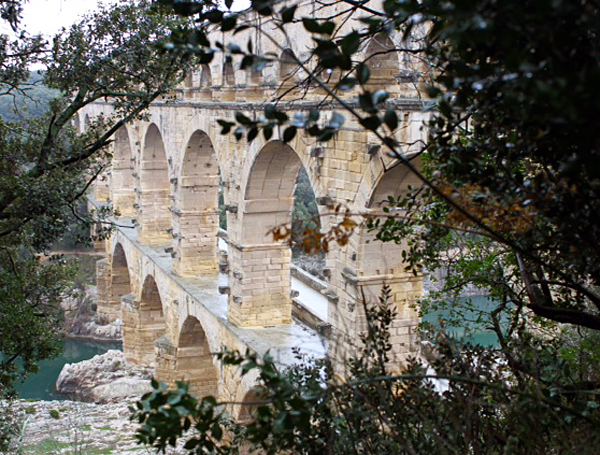Henri Pitot
Today, a story about aqueducts and airspeeds. The University of Houston's College of Engineering presents this series about the machines that make our civilization run, and the people whose ingenuity created them.
Next time you're near a light plane, notice something you normally might not see. It is a small pointed stinger protruding from a wing, away from the propeller. That little item is a Pitot tube. It points a tiny hole into the airstream, and has a set of even tinier holes around it, back some distance from the front.

It's very clever: There's an even-smaller tube inside the tube we see. Air that hits the front hole comes to a halt and its pressure increases. Air that passes the holes back along the shank is not halted in that way, so those holes register the pressure of still air outside. The pressure difference reflects airspeed. It's converted, and displayed on an airspeed indicator for the pilot.
It was invented by Henri Pitot, born of well-to-do parents in Southern France in 1695. Pitot had no taste for education until one day he found a geometry text in a bookstore. That somehow lit a fire under him. He went off for three years to study math and science. Then he went to Paris, ingratiated himself with the noted scientist René Réaumur, and became his assistant.
Pitot learned much. He became especially interested in hydraulics. He wrote a book on the maneuvering of ships. Then he invented his Pitot tube. He used it to measure water velocity in the Seine River, and he wrote a paper about the device. Pitot recognized an important fact: Bring moving water to a halt, and it'll drive a column of water up to exactly the height from which water would flow to gain that velocity. (Same for air.)
As for his other scientific work, historian Otto Mayr says, [Pitot's] "papers offered competent solutions to minor problems, arrived at by elementary mathematics, and without lasting significance." No matter -- that was prelude to a life largely spent in public hydraulic projects.
And that took him at last to th great Roman aqueduct outside Nimes, the French textile city after which denim is named. (Denim, or de Nimes, means of Nimes.) It's a huge structure, built in the early first century to carry water over the River Gard to Nimes. It's called the Pont du Gard. It has three tiers of arches. The top level is 300 yards long, and it soars 160 feet above the river.

When tourists visit it today, most move along a road bridge that's been built out from the lower tier of arches. That bridge, a strange out-of-place add-on to the ancient monument, was designed by Pitot. Then he went on to design his own version of the Pont du Gard. He made a graceful structure to carry water into the town of St. Clement. It's quite lovely, but it's pretty-much a copy.
So Pitot's engineering works pale against his real monument. It's an old story. We affect our world but don't live to know just how. Pitot's little tube, so widely used, so unnoticed on airplane wings, has served us almost four centuries. And it will doubtless still serve us -- long after the great aqueducts finally crumble.
I'm John Lienhard, at the University of Houston, where we're interested in the way inventive minds work.
(Theme music)
O. Mayr, Pitot, Henri. Dictionary of Scientific Biography, C.C. Gilespie, ed. Vol. 11 (New York: Charles Scribner's Sons, 1970-1980): pp. 4-5.
For more on Pitot tubes, see: http://www.speedace.info/pitot_tube.htm
G. Fabre, et al. The Pont du Gard: Water and the Roman Town. tr. Janice Abbott, (Presses du CNRS, 1992)
For more on the Pont de Gard, see: https://en.wikipedia.org/wiki/Pont_du_Gard
Pitot tube photos by J. Lienhard. Pont du Gard photos by Andrea Sutcliffe.

The Pitot tube on this Grumman Bearcat F8F is hidden away under the right-hand wing (Udvar-Hazy Museum)

Pitot's Road Bridge may be seen clearly as it runs parallel with the far side of lower level of the original Roman structure